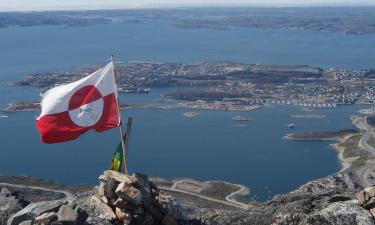Russia to Scrap More Nuclear Submarines
The 136 million dollars provided by the Japanese government for the dismantling of Russian nuclear submarines will be used to scrap forty-two vessels phased out of the Pacific Fleet and now awaiting their fate at Pavlovskaya Bay in the Far East. The first of these submarines, the multi-role 671 Yorsh vessel (or Victor-1 in NATO code) is already in a dry dock at the Zvezda shipyard in Bolshoi Kamen.
 Thousands of kilometres away from the Pacific, two similar submarines, upgraded 671RT (Victor-2) Yorsh'es, have sailed into the harbour of the Severodvinsk shipyard Zvezdochka, where they likewise are slated to be cut up. The 10 million euros for the purpose was allocated by Norway.
Thousands of kilometres away from the Pacific, two similar submarines, upgraded 671RT (Victor-2) Yorsh'es, have sailed into the harbour of the Severodvinsk shipyard Zvezdochka, where they likewise are slated to be cut up. The 10 million euros for the purpose was allocated by Norway.
Admiral Vyacheslav Popov, a representative of the Murmansk region in the Federation Council and deputy chairman of the upper chamber's committee for defence and security, told this analyst that dealing with scrapped nuclear submarines has its own problems, like any business. The admiral evidently meant a scandal that erupted in Murmansk over another delay in putting on stream an installation to process liquid radioactive waste, which is being built with American and Norwegian money. The US and Norway contributed 2 million dollars each, but the unit is still inactive, although it should have gone into operation at the end of last century (i.e., before the end of 2001).
However, crucially, this is a purely technical matter, while earlier the problem was far more serious. If one compares the state of affairs in this field yesterday (i.e., in the late 90s) and today, the difference is tremendous. Today it is evident that if the budget keeps up the present momentum in scrapping outdated submarines, there will be no need any more to worry about their safety and the threat to the environment of the Northern and Far Eastern seas.
The truth is that in the 90s the Russian military lacked the capabilities to dispose of these vessels. In Soviet times, when nuclear submarines were produced serially, such work was never envisaged or planned. It was believed that submarines could only roll over and die in a fight.
But by the late 90s, 184 submarines with nuclear reactors had been decommissioned. They were moored in the bays of the Kola Peninsula, Kamchatka and Primorye Territory. Each of the "doomed" submarines was supplied with electricity, high-pressure air, hot steam, water and other vital services. Keeping afloat "potential Chernobyls", as the environmentalists and Greens called them, required enormous sums of money, which was budgeted by the Defence Ministry out of funds earmarked for combat training and military hardware repairs.
Unlike conventional vessels, nuclear submarines could not just be cut up into pieces or sold as scrap to other countries. The solid nuclear fuel had to be removed first and liquid radioactive waste generated by the reactor's cooling systems had to be drained. The former was to be sent to the Mayak plant for recycling, and the latter decontaminated on the spot. Only with that done, could the nuclear reactor be lifted out of the submarine and left afloat for many years to cool off and lose the induced radiation, with a place finally found for it to be buried in. Only then could the remaining non-nuclear compartments be eventually cut up.
But the procedure lacked money and engineering facilities for it to become reality. In Russia, for example, there are only two four-carriage trains capable of carrying spent nuclear fuel from its offloading and storage places (in the North and the Far East) to central Russia (the Mayak plant in the Chelyabinsk region). In the 90s Russia had only one installation for processing liquid radioactive waste, which is still functioning in the Murmansk region with Atomflot, and services not only the navy, but above all the civilian nuclear icebreaker fleet.
That is why only 48 submarines were dismantled in the last decade of the twentieth century. The remaining 150 "potential Chernobyls" are awaiting their lot to this day. But today the situation is radically different.
Admiral Popov believes that the situation vastly improved after the Russian cabinet of ministers issued resolution No. 518 in 1998. That document prescribed handing the scrapped submarines over to the Nuclear Power Ministry. The budget began to allocate 5 to 6 billion roubles annually for submarine scrapping. And things began to happen. Over the past three years a further 35 submarines have been dismantled. Currently 21 submarines are going through this process. Next up are another 45 Northern Fleet submarines.
Of course, Russia has received great help from its neighbours - Japan, Norway, and the US. Under the Nunn-Lugar program known as the Cooperative Threat Reduction Act, Washington has assigned funds for the construction in Severodvinsk, at the Zvezdochka shipyard of a shore-based technical facility to offload spent nuclear fuel, and for repairing and modernising its dry docks, while it has also supplied state-of-the-art equipment for cutting up submarine hulls. Japanese money in the Far East built a floating complex to process liquid radioactive waste, called Landysh (Lily of the Valley). Construction of a similar installation has commenced in the north with Norwegian and American money. It is this unit that has run into trouble. The designer - FGUP MKTs Nuklid from St Petersburg - just cannot keep to the schedule.
Overseas aid for Russia is essential, says Admiral Popov, "we are grateful for it to our counterparts from Japan, the US and Norway, but it makes up only one-tenth of the funding provided by the Russian government for submarine scrapping and safe storage of the submarines and their spent fuel".
Over the recent period this money has helped to repair storage facilities for solid and liquid radioactive waste at Andreyev Bay in the North. Now elements of the radioactive waste no longer find their way into local streams and the Barents Sea. The environmental situation is getting back to normal. There is a well-organised system of protecting the storage sites, which precludes any theft of fuel elements, as has often been the case in the past.
At Gremikha, repairs are being finished on a dry dock which will receive offloaded nuclear fuel from submarines with liquid metal coolants. There were six of these unique submarines, 705 and 705K Lira (or Alfa in western classification) with a high degree of automation, and they served for more than ten years. Now they require a special scrapping scheme.
The future of reactors from the already dismantled nuclear submarines is also being decided. Fifty-three such units, i.e., a submarine reactor compartment with hermetically sealed "empty" side compartments, are now stored afloat at Saida Bay on the Kola Peninsula. They must stay in this position for at least ten to twelve years until the radiation levels ease off slightly. Then they must be dispatched for long-term (up to 70 years) storage in a dry and environmentally safe location. Most likely, it will be one of the drifts or adits of that same Saida Bay, which were once hewed in the rocks in the eventuality of nuclear war for clandestine moorage and repairs of nuclear submarines. They are no longer needed, and following some necessary work, they will be filled with "dead" reactors.
Novaya Zemlya in the Arctic, despite earlier plans, will not be used for storing reactors. The Russian Defence Ministry has a functioning test range on the archipelago and although nuclear tests have long ceased there, it appears impossible to put compartments with nuclear reactors in the old drifts of the range for long-time storage, Admiral Popov claims.
At the end of the day, in his view, the work done over recent years to organise the safe storage, transportation and processing of liquid and solid waste from submarines and scrapping of submarines, guarantees that no environmental disasters due to scrapped submarines will hit either the North or the Far East.
Viktor Litovkin, RIAN
Subscribe to Pravda.Ru Telegram channel, Facebook, RSS!




